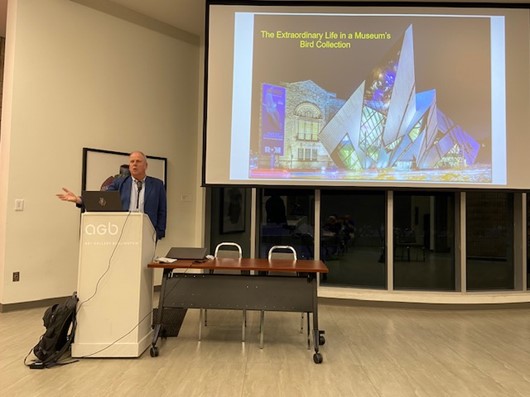Jesse Lumsden mapped out a unique career as a premier Canadian athlete, starting as a standout running back at McMaster University and finishing as an Olympic bobsledder.
Born in Edmonton and raised in Burlington, Jesse knew he wanted to play football from a young age.
A lot of that came from watching his father, CFL Hall of Famer and three-time Grey Cup champion, Neil Lumsden, who played ten seasons in the CFL with Toronto, Hamilton, and Edmonton.
The younger Lumsden played for about a year when he was around eight or nine years old, when his parents pulled him out and told him that if he wanted to play again, he would have to wait until high school, so that’s what he did. As soon as he got to high school, he signed up for the football team.
“When I was 16, I decided that was gonna be my career path,” Lumsden said. “I just was in love with it. I was obsessed with the sport. Obsessed with the game.”
Lumsden attended Nelson High School in Burlington, bringing a Metro Bowl title to his school and was named the Metro Bowl MVP as well as Nelson Football MVP in 1999.
He would then would take his talents to McMaster University, where he was a standout for the Marauders, winning two Yates Cups and breaking numerous career, season, and game records and completed his studies as a geography major.
He won the Hec Crighton Trophy in 2004 as university football’s top player and would leave as the OUA’s all-time leading rusher (4,138 yards).
In 2005, the Hamilton Tiger-Cats selected Lumsden with the sixth pick of the CFL draft, but Lumsden chose to go south of the border after graduating, signing with the Seattle Seahawks the same year.
“My experience in Seattle, which was right out of university, I was so green. I didn’t know what to do. I didn’t know what to expect,” said Lumsden. “I was just wildly just sort of on cloud nine.”
He never saw any playing time or game action with Seattle and the Seahawks eventually released him. Realizing he was just a camp body, Lumsden returned home and finished out the season with the Ti-Cats.
Once he got back to playing football, he said he got some confidence back, ending the season as Hamilton’s nominee for Outstanding Rookie.
Then he tried his NFL luck once more, signing with the Washington Commanders (then the Redskins) in 2006. He said it was a different experience and he felt like a professional going into a professional environment.
“I carried myself differently and then earned a lot of respect from the people that were down there,” he said. “And unfortunately, it was just a numbers game. I was the last guy to get cut in training camp.”
When he reflects on his time in Washington, he says he pushed himself a lot more and learned a lot more during that time, getting to play and practice with the likes of Clinton Portis, Santana Moss, and Sean Taylor.
After his release, he once again came back to Canada, and that’s where he stayed.
He easily had his best year statistically in 2007 with the Ti-Cats, carrying the ball 98 times for more than 700 yards, earning him an East All-Star nod.
Lumsden had the ability to use his size to plow through defences while complementing that with his blazing speed and fantastic vision.
“Just because you are tall doesn’t mean you can’t be elusive and be slippery and Adrian Peterson’s a very recent prime example of that,” he said.
Lumsden compared his body type mostly to Peterson’s, but also used Derrick Henry and Marshawn Lynch as examples of his style of play.
“Another running back said to me once that he thought my greatest asset was my vision on the field, and that’s what helped me the most,” Lumsden said.
“So I could see flow and I could see plays and I can see holes and I was able to use my speed to accelerate and get me into better positions.”
At the beginning of 2009, Lumsden was recruited to try out for bobsleigh. The high-performance director for Bobsleigh Canada Skeleton (BCS) contacted him, saying they had excess funding and were looking for athletes that could easily transition into the sport.
Lumsden says he jokes that he’s been training for bobsleigh his whole life, he just didn’t know that it was so similar to football.
“You need to have top-end speed, which you need to be able to apply force. And I think that’s one thing running backs do very well, is they apply force. Linebackers as well,” he said. “I’ve seen some of the fastest sprinters in the world try to push a bobsleigh and can’t because they don’t know how to apply force into something.”
He said there were a lot of transferable skills but it also came with a steep learning curve to understand and build on that technique.
He went out for the two-week training camp and then decided to go play football in Edmonton.
Unfortunately, he got hurt in the first game of the season, injuring his shoulder after a hit from Winnipeg Blue Bomber linebacker Siddeeq Shabazz. He was placed on the nine-game injured list and underwent surgery that August.
He said that this injury actually helped him prepare for bobsleigh that fall and winter.
He was able to work more on his lower body strength, watch a lot of film and be in the sled without it hurting his shoulder too much.
But what is it actually like going down a bobsled track at speeds sometimes in excess of 100km/h?
“The first time going down, it’s kind of like being put into a garbage can that’s put into a bigger garbage can and then rolled down a hill,” Lumsden said. “So you get used to it and then you start to enjoy it more and then you start to learn more and what you can feel in the sled.”
He rehabbed from his shoulder injury, and while not cleared to resume football, he was able to make his international bobsleigh debut in November 2009, winning a Europa Cup event with the legendary Pierre Lueders.
After competing at the Vancouver Olympics in 2010, he suffered an ACL injury with the Calgary Stampeders three games into the CFL season. Lumsden would retire from football for good in 2011 to focus on bobsleigh.
He then moved into the sled piloted by Olympic bronze medallist Lyndon Rush and they would go on to win the two-man silver at the 2012 World Championships. The duo also won the 2012–13 overall World Cup title in the two-man event.
The 2014 Sochi Olympic Games saw a top-ten finish in the two-man event, but a hairy crash took him and his team out of the four-man event.
After more top-ten finishes at the 2018 Olympics in PyeongChang, Lumsden has stepped away from athletics and lives in Calgary with his wife and two children.
Lumsden is married to two-time Olympian and silver medallist bobsledder Helen Upperton, who has been doing some broadcasting for CBC, something Lumsden himself has dabbled in outside of athletics.
In the last few years, he has moved away from sport altogether. He now works as a team lead for Neo Financial, a Canadian financial institution that touts having no bank tellers or banks you have to go into, with everything being done through their app.
“We’re doing some super cool stuff in the space. And our team was some of the same people that built and scaled Skip the Dishes,” he said. “It’s cool to see and to be a part of a technology company in Canada that’s been built by Canadians. That’s helping Canadians.”
The broadcasting helps him stay close enough to support his friends who are still competing, while still being removed from it at the same time.
“I care a lot about those guys. But I don’t feel like I’m missing out. And that’s I think how I know it’s the right thing.”
He admits that he was disappointed with how his football career turned out, but not because of factors he could control.
“I was very proud of what I was able to do on the field when I was on the field.”





